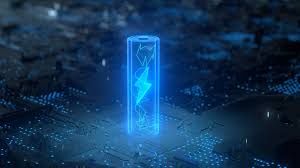
Unleash the Potential of Lithium-ion Battery Recycling
As the world shifts towards sustainable energy sources, the demand for lithium-ion batteries continues to grow. These batteries are the heart of many modern technologies, from electric vehicles (EVs) to portable electronics. However, with the increasing reliance on lithium-ion batteries, the need for efficient recycling solutions has become more pressing. The recycling of lithium-ion batteries holds significant potential, not only for environmental sustainability but also for advancing new materials technology. In this article, we explore the importance of lithium-ion battery recycling and how nanomaterials, including nanomaterial powders, are playing a key role in improving recycling processes and making them more efficient.
The Growing Need for Lithium-ion Battery Recycling
Lithium-ion batteries are commonly used in electric vehicles (EVs), consumer electronics, and energy storage systems due to their high energy density, lightweight nature, and long lifespan. However, the rapid growth in battery usage raises concerns about waste management and resource depletion. As batteries reach the end of their life cycle, they can present significant environmental challenges.
Recycling lithium-ion batteries reduces the need for raw materials, conserves natural resources, and minimizes the environmental impact of discarded batteries. Materials such as lithium, cobalt, nickel, and graphite—critical to battery production—are finite and often sourced through environmentally damaging mining processes. Efficient battery recycling can reduce the pressure on these resources, help recover valuable metals, and contribute to a circular economy.
Challenges in Lithium-ion Battery Recycling
While battery recycling is vital for sustainability, it comes with challenges:
- Complex Composition: Lithium-ion batteries consist of various materials, including metals, polymers, and electrolytes. The complexity of these components makes the recycling process labor-intensive and expensive.
- Safety Concerns: Lithium-ion batteries can be hazardous if not handled properly during recycling, as they may contain toxic chemicals or even explode if damaged.
- Separation and Purification: Extracting pure, reusable materials like lithium, cobalt, and nickel from used batteries requires advanced techniques to separate and purify these metals effectively.
- Cost and Efficiency: Current recycling methods are often not economically viable for large-scale implementation, mainly due to the high costs and inefficient processes involved.
Nanomaterials: A Game-Changer in Lithium-ion Battery Recycling
To address these challenges, nanomaterials are emerging as a promising solution. Nanomaterials, particularly nanoparticles and nanomaterial powders, offer the potential to improve the efficiency and cost-effectiveness of lithium-ion battery recycling. Here’s how nanomaterials can revolutionize the process:
- Improved Extraction of Metals: Nanomaterials can be used to improve the efficiency of extracting valuable metals from used lithium-ion batteries. Nanoparticles with high surface area and reactive properties can enhance the separation of metals such as lithium, cobalt, nickel, and copper. This makes the recovery process faster and more efficient.
- Nanomaterial Powders for Enhanced Purification: Nanomaterial powders can play a crucial role in purifying the extracted materials. By leveraging the unique properties of nanomaterials, such as high reactivity and surface area, researchers can develop more efficient methods to remove impurities from metals, leading to higher purity and better quality recycled materials.
- Sustainable Recycling Processes: Nanomaterials can also contribute to greener recycling processes. Traditional methods of extracting metals from batteries often involve toxic chemicals and high temperatures. However, by utilizing nanomaterials, researchers can develop more sustainable methods that require less energy, fewer chemicals, and produce less waste.
- Advanced Battery Design: Nanomaterials can not only improve recycling but also play a key role in battery design. For instance, nanomaterial coatings or nanostructures can be used to enhance the longevity and efficiency of lithium-ion batteries, reducing the overall demand for battery replacements and, in turn, reducing the number of batteries that need to be recycled.
Innovative Recycling Technologies Powered by Nanomaterials
Several advanced recycling technologies powered by nanomaterials are already being explored:
- Nanostructured Electrode Materials: Researchers are investigating the use of nanostructured materials in the electrode components of lithium-ion batteries. These materials can improve the ability to recover metals like lithium and cobalt more efficiently during the recycling process.
- Green Nanorecycling: This is an innovative concept that integrates nanotechnology with eco-friendly methods. For example, some processes use nanoparticles to selectively adsorb metal ions, making it easier to separate valuable metals from the rest of the battery components without harmful chemicals or energy-intensive methods.
- Hydrometallurgical Techniques: One promising recycling method involves using nanomaterials in hydrometallurgical processes, where metals are dissolved in a solvent and then extracted. Nanomaterial powders can enhance the effectiveness of these solvents by increasing their surface area and reactivity, thus improving the overall recovery rates.
The Future of Lithium-ion Battery Recycling
As lithium-ion batteries continue to dominate the market, the future of their recycling is closely tied to advancements in nanotechnology. Nanomaterials offer significant potential in improving recycling processes, making them more efficient, sustainable, and cost-effective. The integration of nanomaterial powders in the recycling process can significantly enhance the recovery of valuable metals, reduce the environmental impact, and contribute to the circular economy.
Additionally, as battery technology evolves, nanomaterials will play an essential role not only in improving recycling processes but also in the design of future batteries that are easier to recycle and have a longer lifespan. This approach could help reduce the environmental footprint of battery production and recycling, ultimately leading to a more sustainable future.
Conclusion
The recycling of lithium-ion batteries is critical for reducing the environmental impact of discarded batteries and conserving valuable resources. Nanomaterials, particularly nanomaterial powders, offer transformative potential in improving the efficiency, safety, and sustainability of the recycling process. As advancements in nanotechnology continue, the future of lithium-ion battery recycling looks brighter, with the possibility of creating a circular economy that benefits both industry and the environment. By leveraging the power of nanomaterials, we can unlock the true potential of lithium-ion battery recycling and move towards a more sustainable and resource-efficient world.
